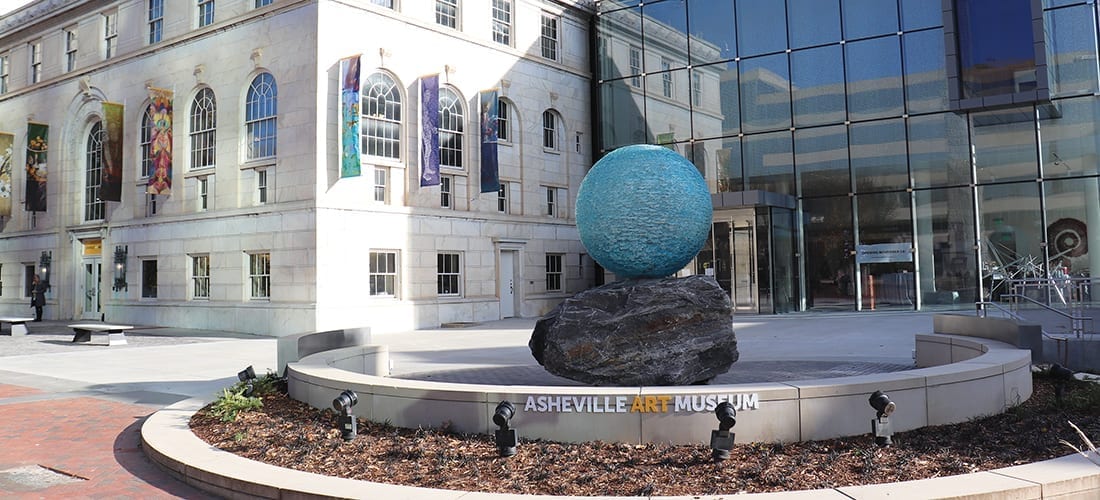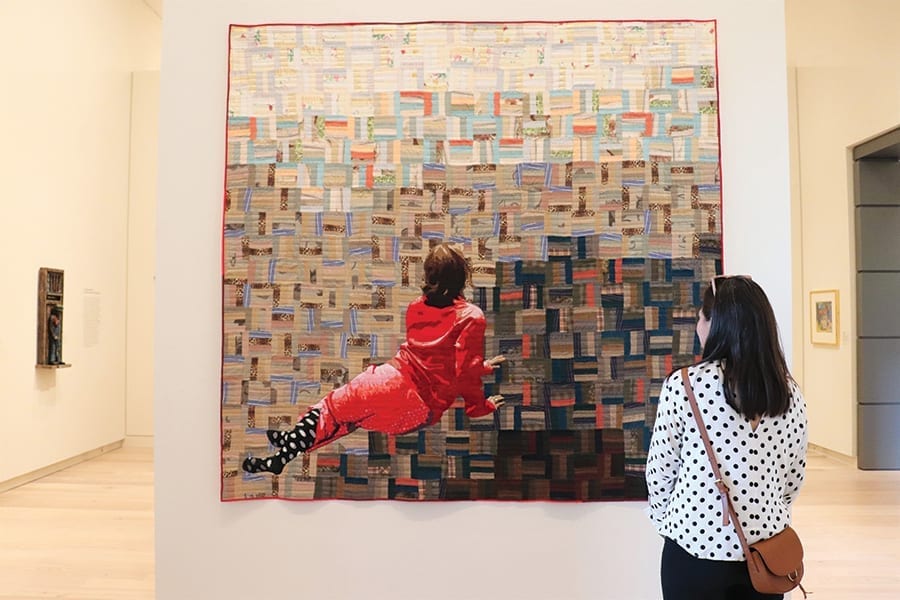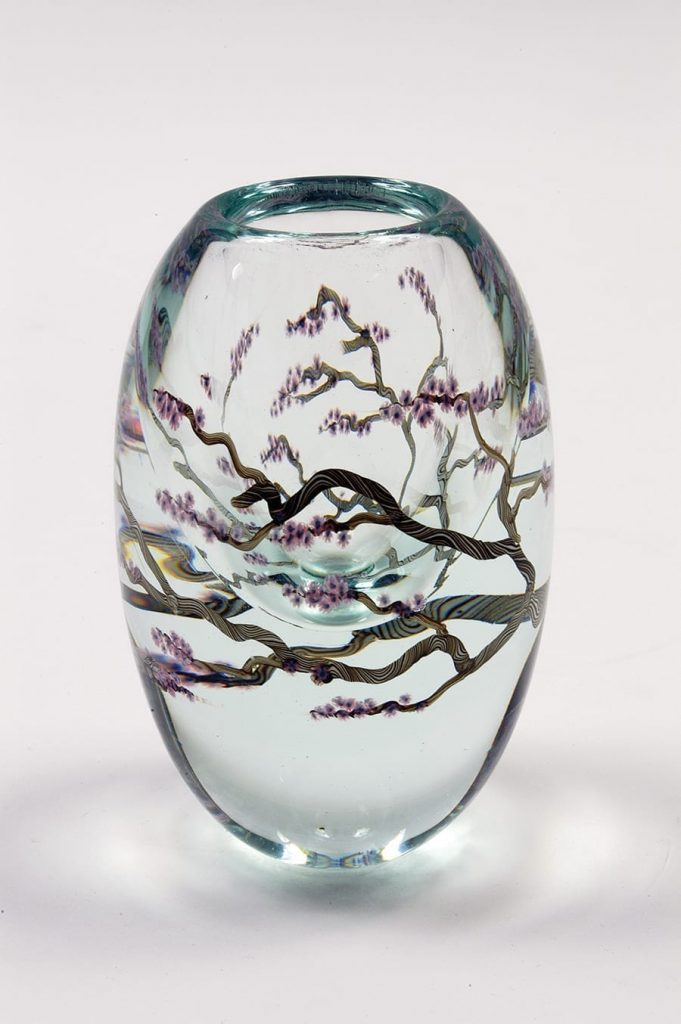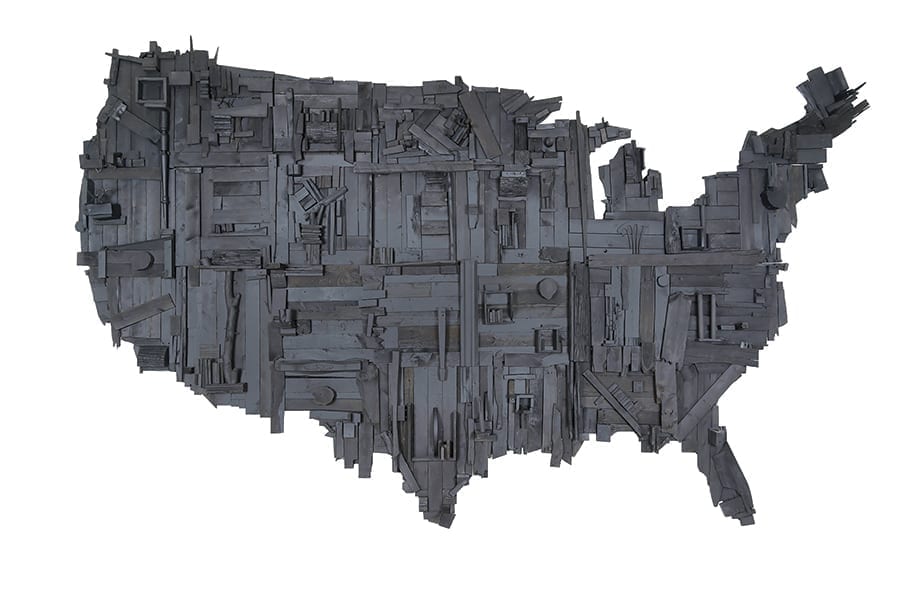Elevated art
February 5, 2020

After a stunning $24 million expansion, Asheville Art Museum provides another compelling reason to visit the western N.C. city.
By Cathy Martin
Maya Lin is an internationally acclaimed architect and sculptor, perhaps best known for designing the Vietnam Veterans Memorial in Washington, D.C., when she was a senior at Yale University. Now based in New York, Lin was awarded the National Medal of Arts in 2009 and the Presidential Medal of Freedom in 2016.
Alex Bernstein is a glass artist born in Spruce Pine and raised in Yancey County, who went on to earn a Master of Fine Arts from the Rochester Institute of Technology in upstate New York. His work has appeared in solo shows and collections from Seattle to Palm Springs to the Glasmuseum Frauenau in Germany, but he now calls Asheville home.
At the newly expanded Asheville Art Museum, Lin’s “Pin River,” a steel-pin rendering of the French Broad River, and Bernstein’s “Ice Meadow” crystal-and-steel sculpture inspired by a frozen lake fed by the Cuyahoga River, appear side-by-side, reflecting the museum’s efforts to highlight the work of both national art heavyweights and regional talent.

The 54,000-square-foot museum held its grand reopening in November, following a $24 million renovation that took three years and more than doubled the museum’s footprint. The renovation preserved the original 1926 Pack Library building and added contemporary space, including a bright, glass-walled atrium and a larger gallery for the museum’s permanent collection, Intersections in American Art. The collection, focused on works of art by regional and national artists from 1860 to today, has grown by nearly a third over the last three years.
You’ll know you’ve arrived when you spot the three-story glass façade and the enormous blue cut- and chiseled glass orb on the plaza in front of the museum entrance on Pack Square. New York-based sculptor Henry Richardson’s “Reflections on Unity” weighs about 4,500 pounds and sits atop an 8-ton boulder from a local quarry.
“The concept is unification of the community and inclusion for people coming to the museum,” Richardson said at the November opening. “It becomes a beacon essentially, to pull people in from the community and through the doors into the museum.”
A major inspiration for the museum’s permanent collection is Black Mountain College. The progressive liberal-arts college operated from 1933 to 1957 in the Swannanoa Valley. Despite its brief existence, Black Mountain College had an outsized impact, with some of the most significant artists of the 20th century having taught or studied there.
“It instantly makes a network of connections for us,” said assistant curator Whitney Richardson. The collection includes several works by artists associated with Black Mountain College, which was located about 15 miles east of Asheville.
In the gallery, you might find works of fine art displayed alongside decorative arts or crafts from the same time period. For example, a 1960 abstract painting by Massachusetts-based Jo Sandman is paired with a trio of ceramic platters from the same era.

Also on view is a studio glass collection that includes works by three western N.C. artists and a photography exhibit featuring recent gifts to the museum.
A new rooftop terrace and café offers mountain views and a locally sourced menu of small plates, sandwiches and salads, while an interactive play space caters to the museum’s youngest patrons.
While Asheville has become a tourist hot spot centered around its local beer and culinary scene, the new museum serves as a reminder of the area’s rich arts heritage.


“This area, with the Black Mountain College, was built on the arts, so I think [this museum] is putting the focus back a little bit more on the art,” Bernstein, the glass sculptor, said at the museum opening.
“It’s fitting, and the museum has been incredibly inclusive to all the local artists and incredibly friendly,” Bernstein said. “Honestly, that doesn’t always happen. Sometimes museums don’t want to have anything to do with the local community — they just want ‘fancy’ people. This museum has been the opposite. … It really feels like a community effort.” SP

WANT TO GO?
Asheville Art Museum is located at 2 South Pack Square in downtown Asheville. The museum is open daily (except Tuesdays) from 11 a.m. – 6 p.m. and until 9 p.m. on Thursdays.
The museum’s opening exhibit, Appalachia Now!, concludes on Feb. 3. The exhibition features the work of 50 artists presently working in Southern Appalachia.
A Telling Instinct: John James Audubon & Contemporary Art opens on Feb. 21, combining the works of the famous American illustrator with works by 21st-century artists inspired by the animal world. ashevilleart.org
Feature photograph (top image) photograph courtesy of Asheville Art Museum-Reflections on Unity by Henry Richardson
